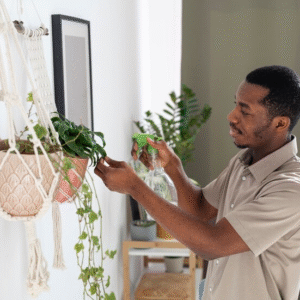Long-distance relationships (LDRs) are more common than many people assume. In the United States alone, an estimated 14 million couples currently identify as being in a long-distance relationship, showing just how widespread this experience is. For students, the numbers are even higher as studies suggest that over half of college students have been in an LDR at some point in their lives.
Of course, distance brings its challenges. Research shows that around 40% of LDRs eventually end in breakups, with the average breakup happening about 4.5 months in. . Yet, the numbers also reveal a more hopeful side. Studies show that 58–60% of long-distancerelationships survive when couples intentionally invest in communication, trust, and a shared vision for the future.
In fact, some research suggests that couples in LDRs often have more meaningful conversations and develop a deeper emotional bond compared to couples who see each other daily.
This mix of risk and reward is why being intentional matters so much. With the right strategies for communication, intimacy, and long-term planning, many long-distance couples not only make it work but find that the experience strengthens their connection.
1. Communication: set a signal system, not a script
In long-distance relationships, communication is both the lifeline and the biggest challenge. Without physical cues like facial expressions or tone of voice, it’s easy for a harmless short text to come across as cold or dismissive. Over time, these tiny misunderstandings can pile up and erode trust. Clear, consistent communication is basically creating a rhythm and a system that both partners understand, so messages land as intended.
Ways to go about it include:
Avoid long text chains for big topics. If something feels emotionally loaded or complex, switch to a voice or video call. Tone, pauses, and facial expressions add clarity that a wall of text just can’t convey.
Agree on expectations up front. Dedicate one conversation to outlining what you both need: maybe it’s daily check-ins, “do not disturb” hours during work, or a promise to share feelings honestly rather than bottling them up. Write these down somewhere you can revisit, like a shared note or couples app.
Use a “signal system” for tone. Text can be notoriously flat. To avoid confusion, add quick context signals like “FYI—” before neutral updates, “Stress” if you’re venting, or “Excited” when sharing good news. This way, tone travels with the words, leaving less room for misinterpretation.
Schedule weekly “quality check” calls. A 20–30 minute call once a week, focused solely on the relationship (not just life updates), helps catch small frustrations before they grow. Use this time to share appreciation, discuss challenges, and reset expectations if needed.
2. Maintaining intimacy
In long-distance relationships, couples can sometimes fall into the trap of talking only about daily routines or logistical updates, which makes the relationship feel functional but not necessarily fulfilling. Intimacy is built when both partners feel seen, heard, prioritized and this can absolutely be nurtured across distance by creating small rituals that remind you of each other’s presence and by introducing new experiences that keep the relationship exciting.
Steps on how to achieve this include:
- Create daily micro-rituals. Examples: a morning voice note, a “goodnight” photo, or a two-minute gratitude voice clip. Small, frequent touches keep you emotionally present.
- Plan monthly “main date nights.” Make one date a little extra: both cook the same recipe, watch a synchronized movie, or play an online game together.
- Share a media list. Create a shared playlist or reading list to discuss. It becomes an ongoing conversation starter.
- Use asynchronous video to feel present. Send short video messages when you can’t call; seeing facial expressions brings back warmth.
- Be tactile when possible. When visits happen, prioritize touch-rich activities (a long walk, cooking together, massages) to reinforce physical connection.

3. Planning the future
One of the biggest stressors in long-distance relationships is uncertainty. Without a shared vision of where the relationship is headed, distance can begin to feel endless, draining motivation and causing resentment. Research on relationship success shows that couples who set clear expectations about timelines and future plans report higher satisfaction and are more likely to stay together long-term.
Some Action steps you can take include:
- Map a 3-step timeline. Example: (1) Regular visits for 6 months, (2)Relocation discussion at 12 months, (3) decide on long-term location and financial plan by 18 months. Put dates beside each milestone.
- Be specific about visit logistics. Who covers travel? How often? Plan visits at least one month ahead so both can prioritize.
- Make money talk practical and non-accusatory. Track shared trip costs, reservations, or gifts in a transparent tool and agree how to split or reimburse.
- Agree exit-clauses and check-ins. If circumstances change (job, visa, health), have a plan to revisit the timeline not as failure but as responsive planning.
4. Conflict resolution: small rules that prevent escalation
Every relationship has disagreements, but in long-distance relationships, conflict can feel amplified. Without body language or physical reassurance, messages get misread, tone gets lost, and small issues can quickly snowball. That’s why it’s essential to set guidelines that keep tensions from spiraling out of control and prevent minor frustrations from turning into major cracks in the relationship.
Practical guidelines to use:
- Use the 24-hour rule. If you’re furious, resist the urge to fire off long, reactive messages. Give yourself up to 24 hours before responding, or wait until you can speak calmly on a call. This prevents emotional flooding and keeps words you might regret from becoming permanent.
- Use “I” statements and be specific. Instead of saying, “You never make time for me”, try “I felt left out when we didn’t talk after your meeting yesterday.” Framing your feelings this way reduces defensiveness and makes it easier for your partner to understand your perspective.
- Schedule cooling-off calls. If a fight derails, pause instead of escalating. Agree to reconvene later on a short video or voice call where both of you come back with calmer energy. A scheduled resolution moment ensures that issues don’t linger or fester.
Recommended apps & tools (how to use them)
- Marco Polo — Perfect for when time zones clash, Marco Polo allows asynchronous video messaging. Instead of missing each other’s calls, you can send short, personal video updates that your partner can watch and reply to later. Seeing each other’s faces, even briefly goes a long way toward feeling visually present.
- Between — A private space designed specifically for couples. Use it for chats, photo sharing, saving anniversaries, and memory-keeping. Think of it as your own digital scrapbook and messaging hub combined.
- Teleparty (formerly Netflix Party) — Movie nights don’t have to disappear just because you’re apart. Teleparty synchronizes streaming across devices and adds a chat window, so you can laugh, comment, and react together in real time.
- Spotify (Jam & Shared Playlists) — Music is a powerful connector. With Spotify’s collaborative features, you can create joint playlists or use Spotify Jam for shared listening sessions. It’s a fun way to soundtrack your relationship or surprise each other with new finds.
- Splitwise — Money can be a quiet source of stress in LDRs, especially when planning visits. Splitwise helps track shared expenses transparently so both partners feel the costs are fair.
- Google Calendar & Calendly — These scheduling tools are game-changers for long-distance couples. Share calendars to block visit dates, regular calls, or even “do not disturb” hours. Calendly is particularly useful when you’re juggling different time zones.
- Zoom, FaceTime, WhatsApp, or Signal — Reliable video calls are the backbone of an LDR. Pick the platform that works best for your region and connection, and always have a backup option in case of poor network quality.
For long-distance relationships, use the communication patterns above, pick two intimacy rituals, and commit to a simple timeline for the future. Start small: set one weekly ritual, pick one app to try this week, and schedule a short “relationship check” call. Over time, those small, consistent choices compound into a relationship that’s secure — distance or no distance.











